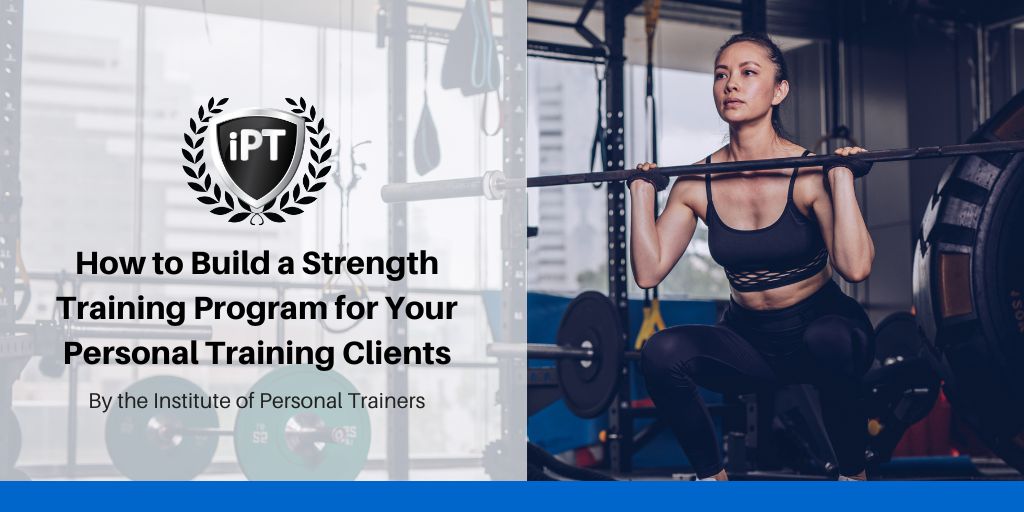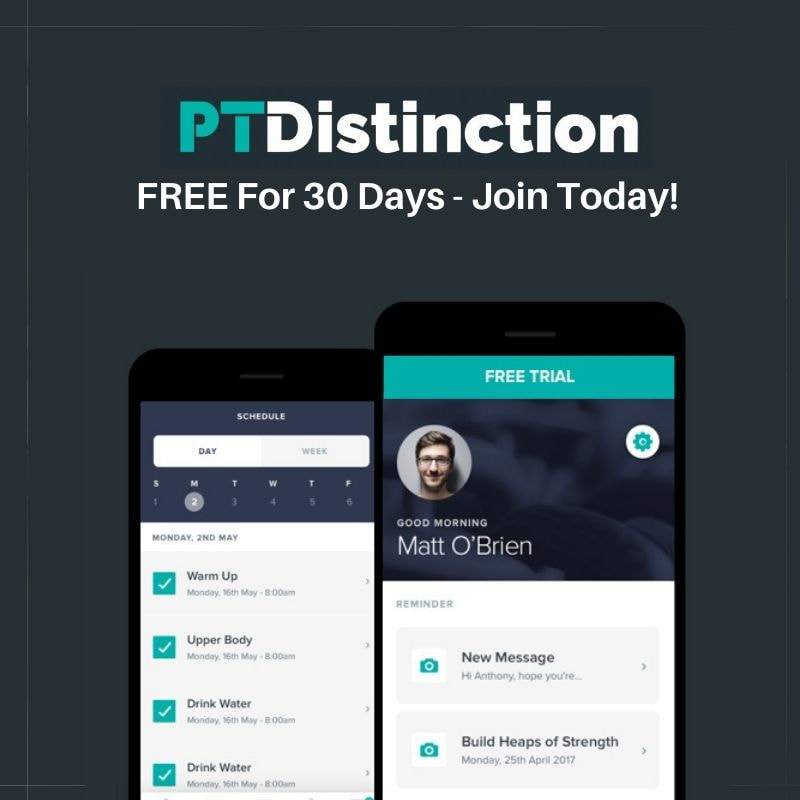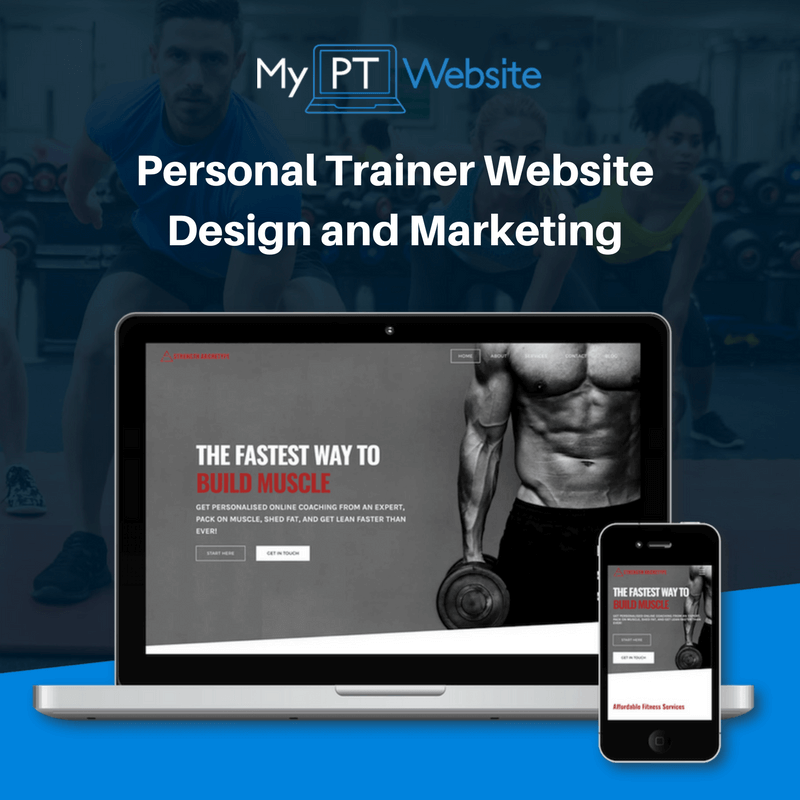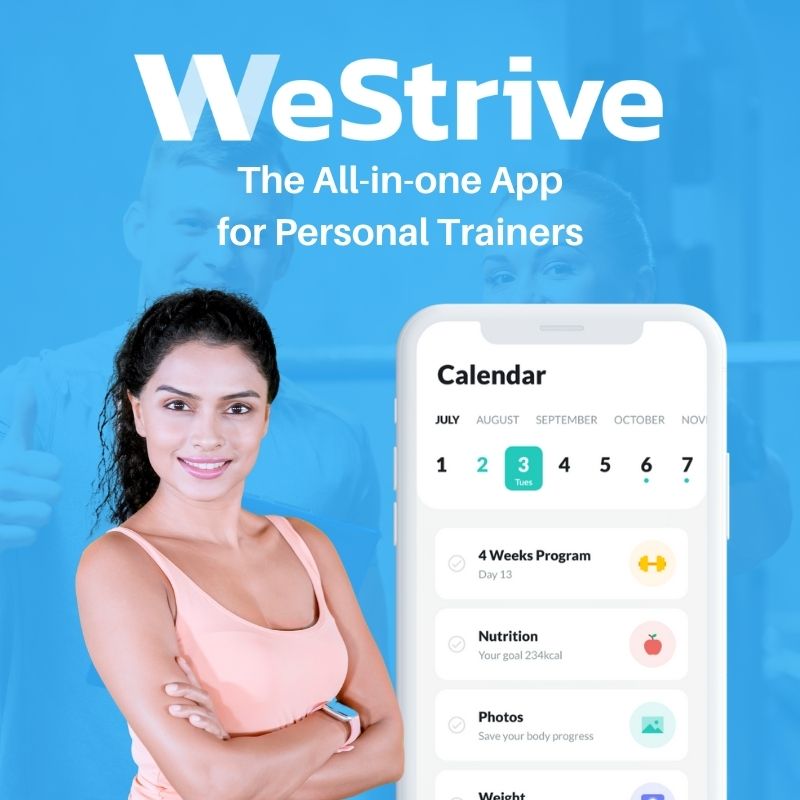|
FREE GUIDE: HOW TO LAUNCH AN ONLINE PERSONAL TRAINING BUSINESS
IN JUST 7 DAYS
✓ The new, better way of launching an online business
✓ The fastest way to create in irresistible offer ✓ A simple system to sell to clients who are interested |
|
Strength training benefits everybody, from people looking to combat the natural loss of muscle mass as they get older to clients who want to achieve an elusive six-pack and build bigger biceps, as well as hobby athletes who want to enter lifting competitions or get stronger for endurance sports. Personalization is critical when programming workouts for any goal based on the ability and circumstances of your personal training clients. That's especially true for people with strength goals. Let's look at ways you can make your life easier when programming strength workouts. Step 1. Think in Templates While each personal training client needs a tailored approach to their workout plan, you can create a few main templates for your ideal clients' most common goals. This doesn't mean you'll deliver those templates but rather that you have a framework to use and then make adjustments to each program based on individual needs. Some of the most common goals an average personal trainer would come across can be:
These are a few examples but a great place to start building out goal-specific templates, so you don't have to start from scratch every time a client comes through your door with a unique problem. Once you do their movement assessment, you'll be able to adjust the template, so it meets them where they are with their strength. Step 2. Create Categories for Movement Patterns You'll Use Categorizing strength exercises based on functional movement patterns makes it much easier to tell if your program is balanced or not when you aren't focused on the exercise itself but on the pattern. An example of an imbalanced plan could be where all leg exercises focus on quad strength and none on the hamstrings or the other way around. What are functional movement patterns? These are based on real-world movement biomechanics. They tend to involve multi-joint, multi-planar movements. Check out the most commonly used categories by personal trainers and coaches and a few examples for each:
When the goal is to ensure a client's workout incorporates exercises from all these categories, you can be sure they will build functional and optimal strength. As you already suspect, many exercises could fall under more than one category. For instance, Deadlifts and Push-ups also work the core, and the Pallof Press requires a pushing movement. However, it's worth categorizing them based on the primary pattern and objective. Doing this gives you a foundation you can use for every strength training workout plan you put together. It gives you a blueprint, making it easy to construct a personalized and beneficial program for your client every time. Step 3. Decide on the Weekly Session Plan There are many ways to structure a workout plan. The ideal split will depend on how often your client is committed to working out per week. The most common frequency is 2 strength workouts per week for most of the general population, so we'll focus on that here. There are 2 approaches when it comes to structuring a 2-day workout plan. Lower-body / Upper-body You can decide to work primarily on the upper body or the lower body in these sessions, but that would mean the client exercises specific areas once a week. This split demands pushing and pulling movement on upper-body days, for instance, bench presses with bent-over rows. On lower-body days, you would pair a knee-dominant exercise with a hip-dominant one, for example, front squats with Romanian deadlifts. Movement Patterns Another way for the client to get more bang for their buck is to keep both sessions full-body workouts and apply a balance of hip-dominant/knee-dominant and upper-body pull/push patterns. This means they would perform all these 4 patterns in both their sessions. We will get back to how you can structure exercises with this approach in step 5. and give you a template you can use. This movement pattern approach works for clients who train up to 3 times a week, but if they intend to exercise more often than that, you might need to consider the upper body/lower body split to prevent overtraining. Step 4. Create the Session Framework Before you start assigning exercises to a workout plan, creating a layout where you consider workout goals is a great idea. This step will help you personalize client programs efficiently because you can replace exercises where needed with others from the same movement category to meet the client's unique needs. #1. Power Power training is beneficial for all ages and is the first thing to diminish as we age. When putting together a strength training workout, starting with a power exercise that targets the nervous system is always wise. Since we're talking power, you'd like to keep the repetitions low and the rest periods higher. #2. Compound Movements The foundation of strength training is multi-joint exercises that work the entire body. It's a good idea to consider the movement patterns and ensure the movements you use here create balance. If you're aiming to add 2 exercises here, you might want to consider how they complement each other. #3. Accessory Exercises After the power and compound section, you can think about the additional work to focus your client's efforts on their specific goals. This section is the one where you will be able to show more creativity and greater variety. This is also the section where you might use a wide range of exercises compared to the previous. Simply because there are plenty of them to choose from #4. Core Core strength is an area that benefits everybody. Whether they want to work on their functional strength, get better at running, improve posture, or simply workout for longevity, core strength is crucial to any strength workout plan. Step 5. Build the Workout Program So, now you know that your client will workout twice a week, and you'd like them to make the most out of their time with you, so you aim for full-body workouts focusing on hip/knee and push/pull balance in both sessions, and you also have the structure framework laid out. It's time to put it all together. Power Consider your client's ability carefully when deciding on the best power exercise for their level. After all, power exercises demand the most from the muscles, joints, and the nervous system, so you want to ensure you choose the right movement here. For instance, if your client is a beginner, it would make more sense to do medicine ball throws instead of Olympic lifts. Keep the repetitions low to reduce the risk of premature exercise fatigue and poor form. A fit client may do 3 medicine ball throw sets, with 5 to 10 reps each before moving on to the next exercise. Someone's just starting might exert themselves after their first set. Another exercise could be a step or box jump for lower reps. Regarding rest periods, we recommend two to three minutes of rest between sets for high-level jumps and Olympic lifts. One minute will be sufficient for medicine ball throws and low-intensity jumps. Compound Movements Ideally, you don't want to overload the client, so including 2 big lifts here will be sufficient for most people with general strength goals. Not to mention that you'll prescribe them twice a week for them, so it's crucial not to tire them out too much. For this section, you can choose a knee-dominant exercise like the front squat or a hip-dominant like the Romanian deadlift. You can also select an upper-body pull exercise like pull-ups or a push exercise like the bench press. We're still working for strength, so the aim here would be working around 4-6 repetitions with a rest period of approximately 2 minutes at least between sets. Accessory Work As we mentioned, this is where the highest level of personalization can happen. What you include here will depend on the client's goal and whether or not there is a specific area they'd like to work on. You'd also want to consider the functional strength patterns you used in the compound section and ensure you balance those out. Repetitions in this section will be higher and the rest period lower to pump the muscles involved in that exercise. Ideal for building muscle mass, shedding unwanted body fat, and developing muscular endurance. Exercises like the hip-dominant single-leg hip thrusts, knee-dominant side lunges, single-arm row for horizontal upper-body pull, and kneeling landmine press for upper-body vertical push are great examples. Repetitions would be in the 8-12 range or even higher for muscular endurance if needed. The rest periods would be between 30-90 seconds to induce fatigue. Core The last but pretty important section is where you add client-specific core exercises to improve core strength and endurance, promote a better posture, and support perfect exercise form on compound movements. Your choices are endless here, but your client will get the best out of core exercises that don't only focus on one muscle group like the abs, but the whole area between their diaphragm and glutes. Think Pallof press, plank variations, animal crawls, and so on. Repetition-based exercises like the Palloff Press, you might go for 10-15 reps with 30-45sec rest in between. With the elbow plank, you want to aim for 30 seconds multiple times with 30s rest and up to 60-120 seconds maximum. 2-Day Strength Training Workout Template So, based on all the above, this is how this 2-day workout template will look. It can work for people who want to lose weight, build balanced strength, and improve their core control. Day 1 Power - Low Box Jump - LB Hip-dominant - 3 x 6, 2 min rest Compound 1 - Front Squat - LB Knee-dominant - 5 x 3, 2 min rest Compund 2 - Pull-up - UB Vertical Pull - 5 x 3, 2 min rest Accessory 1 - Press-up - UB Horizontal Push - 3 x 10, 90s rest Accessory 2 - Single-Leg Hip Thrust - LB Hip-dominant - 3 x 10, 90s rest Accessory 3 - Landmine Shoulder Press - UB Vertical Push - 3 x 12, 75s rest Core - Elbow Plank - Anti-Extension - 3 x 30s, 30s rest Day 2 Power - Medicine Ball Throw - UB Horizontal Push - 3 x 10, 60s rest Compound 1 - Romanian Deadlift - LB Hip-dominant - 5 x 3, 2 min rest Compound 2 - Bent Over Row - UB Horizontal Pull - 5 x 3, 2 min rest Accessory 1 - Side Lunge - LB Knee-dominant - 3 x 10, 90s rest Accessory 2 - Lat Pull-Down - UB Vertical Pull - 3 x 12, 75s rest Accessory 3 - Push-press - UB Vertical Push - 3 x 12, 75s rest Core - Palloff Press - Anti-Rotation - 3 x 10-15, 45s rest Wrapping Up So there you have it: our steps to follow when programming strength training workouts for your personal training clients. We hope that the advice we have provided above will make it easier for you to put together individual plans to help your clients reach their goals.
|
Our All In One Platform
Check out out all in one business & marketing platform for personal trainers!
WEBSITE BUILDER | FUNNELS |MEMBERSHIPS | SCHEDULING| EMAIL MARKETING| PAYMENTS| CRM | AI ASSISTANT | SURVEYS
Popular Articles
Trusted Partners
We work closely with some of the best service providers in the fitness industry.
Categories
All
|







